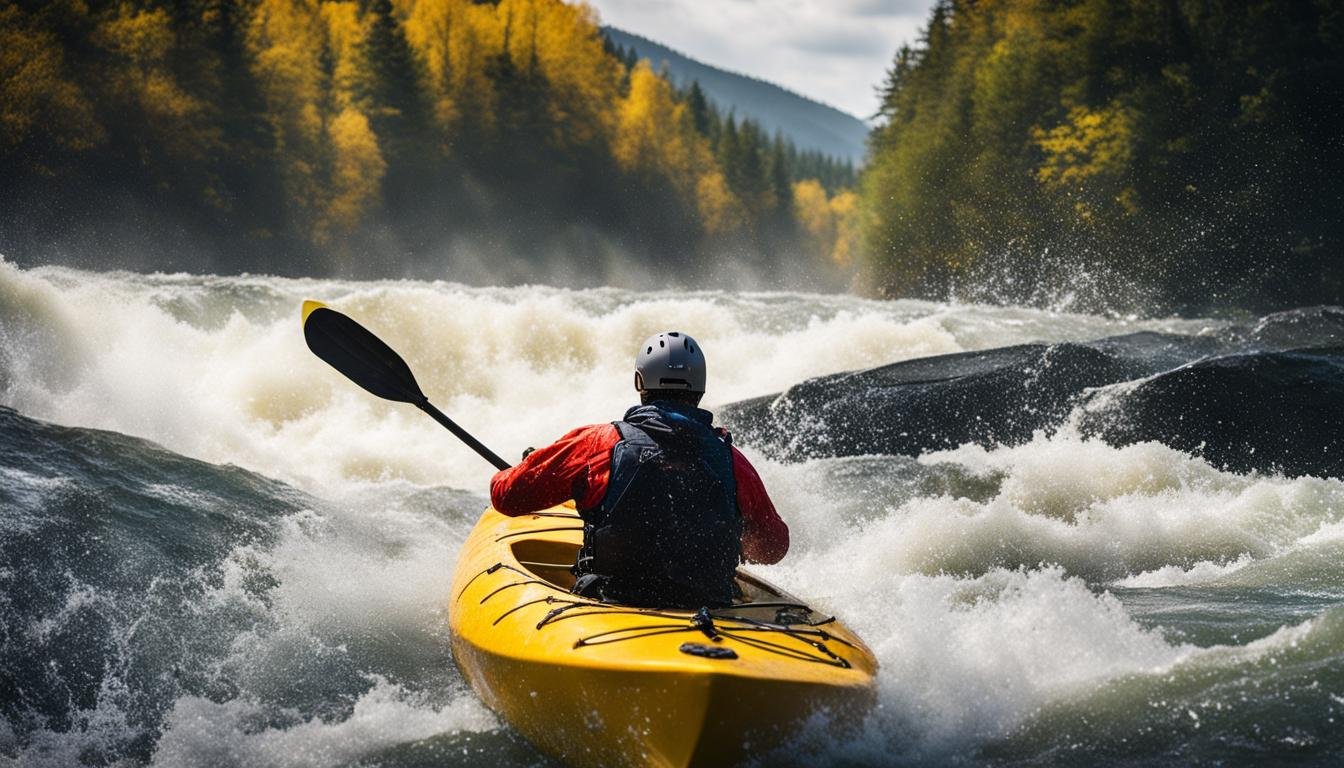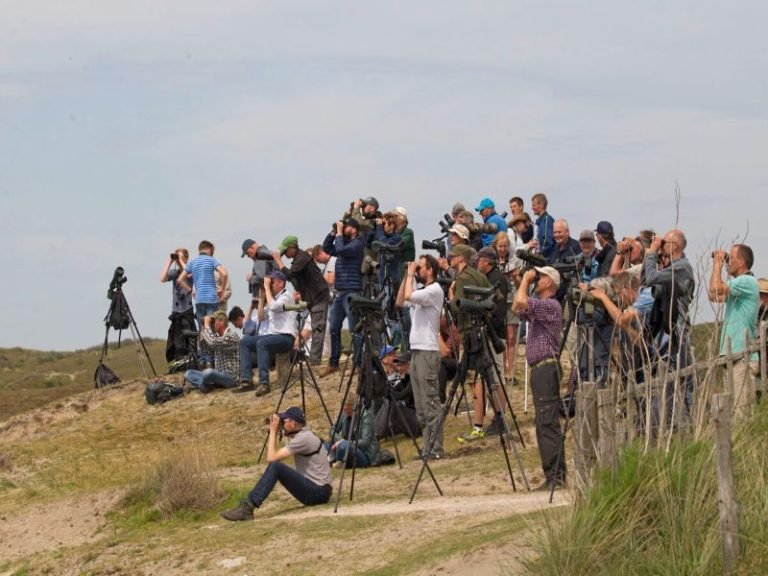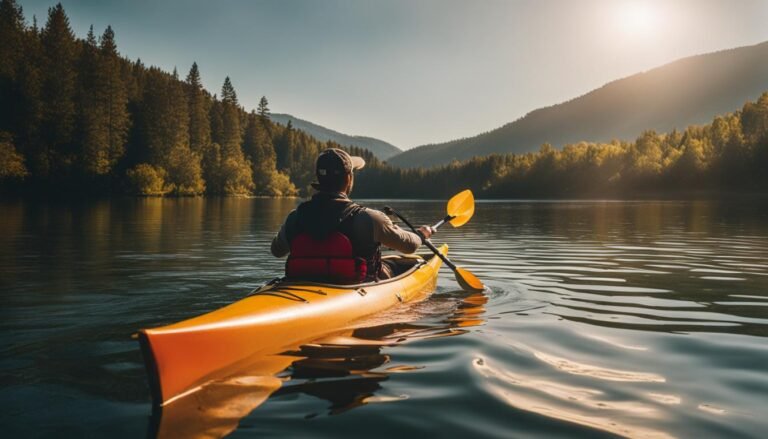What Does Tracking Mean in Kayaking?
When it comes to kayaking, tracking refers to the kayak’s ability to move in a straight line through the water. In other words, it’s how well a kayak maintains its course without veering off track. Understanding tracking is essential for a smoother and more efficient paddling experience.
Key Takeaways:
- Tracking in kayaking refers to the kayak’s ability to move in a straight line.
- Factors such as hull design, weight distribution, and additional features like a rudder or skeg influence tracking.
- Improving kayak tracking can be achieved through proper paddling technique and considering the use of a rudder or skeg.
- Choosing a kayak design that prioritizes tracking can enhance your paddling experience.
Factors Affecting Kayak Tracking
In kayaking, understanding tracking is essential for maintaining a straight course through the water. However, several external factors can influence how well a kayak tracks. Let’s take a closer look at these factors:
1. Wind
Wind can have a significant impact on kayak tracking. Strong winds can cause the kayak to veer off course, especially if it’s not equipped with additional tracking features like a rudder or skeg. Paddling against the wind can be challenging, as it creates resistance and may require more effort to keep the kayak on track.
2. Water Currents
Water currents can also affect kayak tracking. If you’re paddling in a river or near a coastline with noticeable currents, it can be challenging to maintain a straight course. The force of the current can push the kayak in different directions, requiring constant adjustment and paddling techniques to stay on track.
3. Waves
Waves can create additional drag and make it difficult to paddle in a straight line. When encountering waves, the kayak may be pushed off course, requiring extra effort to regain control and maintain the desired direction. Proper technique and adjustments to paddle strokes can help minimize the impact of waves on tracking.
4. Weight Distribution
The distribution of weight on the kayak also plays a role in tracking. If the weight is not evenly distributed, it can cause imbalance and affect the kayak’s ability to maintain a straight line. Properly distributed weight helps stabilize the kayak and improves tracking, enabling smoother and more efficient paddling.
| Factors | Impact on Tracking |
|---|---|
| Wind | Can cause the kayak to veer off course without additional tracking features. |
| Water Currents | May push the kayak in different directions, requiring constant adjustments. |
| Waves | Create drag and can push the kayak off course. |
| Weight Distribution | Uneven weight distribution can affect balance and tracking. |
Understanding these factors is crucial for improving your kayak tracking skills. By being aware of the external elements that can impact tracking, you can make the necessary adjustments and techniques to maintain a straight course and enhance your overall kayaking experience.
Importance of Tracking in Kayaking
Tracking is a crucial aspect of kayaking that can greatly enhance your overall paddling experience. When a kayak tracks well, it maintains a straight course through the water, allowing for smoother and more efficient paddling. This not only saves you energy and reduces fatigue but also enables you to cover more distance in less time, making your adventures on the water more enjoyable.
In addition to improving efficiency and speed, good tracking gives you better control over your kayak. It allows you to navigate obstacles and maneuver with ease, making it easier to explore different water environments and take on various kayaking challenges. Whether you’re paddling through calm lakes or tackling whitewater rapids, the ability to keep your kayak on track is essential for a safe and enjoyable experience.
Having a kayak that tracks well is particularly important when facing external factors such as wind, water currents, and waves. Strong winds can easily push a kayak off course, while currents can make it challenging to maintain a straight line. With good tracking, you can paddle confidently even in adverse conditions, ensuring that you stay on course and reach your destination effectively.
| Benefits of Good Tracking in Kayaking: |
|---|
| Efficient and smooth paddling |
| Reduced fatigue |
| Increased paddling speed and distance |
| Better control and maneuverability |
| Ability to navigate obstacles with ease |
| Confidence in facing external factors like wind and currents |
Overall, tracking is an essential element of kayaking that directly impacts your paddling performance and enjoyment. By choosing a kayak with good tracking capabilities and practicing techniques to improve tracking, you can elevate your kayaking skills and make the most of your time on the water.
How to Improve Kayak Tracking
Improving kayak tracking is essential for a smoother and more efficient paddling experience. By implementing a few techniques and strategies, you can enhance your ability to keep the kayak on track and maintain a straight course.
1. Practice Good Paddling Technique
One of the key factors in improving kayak tracking is mastering good paddling technique. Focus on using even and smooth strokes, keeping the paddle close to the kayak, and maintaining a consistent rhythm. By practicing proper technique, you’ll be able to maintain a straight course and reduce unnecessary zigzagging.
2. Use the Right Paddle
Choosing the right paddle can make a significant difference in improving kayak tracking. Opt for a lightweight paddle that is the correct length for your height and kayak width. The proper paddle will enhance your strokes and minimize resistance, allowing for better control and straighter tracking.
3. Ensure Proper Weight Distribution
The way you distribute weight in your kayak can affect its tracking ability. Make sure to distribute weight evenly from side to side and front to back. Avoid having too much weight concentrated in one area, as it can cause the kayak to tilt and impact tracking. By achieving proper weight distribution, you’ll enhance stability and improve tracking.
Remember, improving kayak tracking takes practice and experimentation. Keep trying different techniques, paddle styles, and weight distributions to find what works best for you. The ultimate goal is to enhance your paddling experience, allowing you to enjoy the journey while effortlessly gliding through the water.
Using a Rudder to Improve Tracking
When it comes to mastering kayak tracking, one effective tool that can greatly enhance your maneuverability is a rudder. A rudder is a small blade attached to the back of the kayak that can be used to steer the boat. It provides precise control over the direction of your kayak, allowing you to maintain a straight course even in challenging conditions such as strong winds or choppy waters. By using foot pedals connected to the rudder, you can easily make adjustments to your kayak’s heading, ensuring that you stay on track.
The addition of a rudder not only improves tracking but also enhances your overall paddling experience. With a rudder, you can navigate obstacles with greater ease and finesse. It provides you with better control over your kayak’s movements, allowing you to make quick turns and navigate tight spaces effortlessly. Whether you’re exploring calm lakes or tackling whitewater rapids, a rudder can be a valuable tool in your kayaking arsenal.
It’s important to note that not all kayaks come with a rudder pre-installed. However, many kayaks are designed to accommodate a rudder, and it can be installed separately if desired. Before purchasing a kayak or rudder, be sure to check compatibility and compatibility options that are available for your specific kayak model. If your kayak is already equipped with a rudder, familiarize yourself with how it operates and practice using it to maximize its benefits.
Benefits of Using a Rudder for Kayak Tracking:
- Improved maneuverability
- Enhanced control in challenging conditions
- Easy navigation of obstacles and tight spaces
- Efficient and precise adjustments to maintain a straight course
Conclusion
When it comes to mastering kayak tracking, the use of a rudder can be a game-changer. It provides you with the ability to maintain a straight course and navigate with ease in varying conditions. Whether you’re a beginner or an experienced paddler, incorporating a rudder into your kayaking setup can greatly enhance your maneuverability and overall enjoyment on the water.
Using a Skeg to Improve Tracking
If you’re looking for tips to improve your kayak tracking, utilizing a skeg can be a game-changer. A skeg is a small fin attached to the bottom of your kayak near the stern. Its primary purpose is to provide stability and resistance to wind and waves, ultimately helping you maintain a straight course through the water.
Some kayaks come with a removable skeg, while others have a deployable skeg that can be adjusted as needed. Experimenting with the position of your skeg can help you find the optimal tracking performance for your kayak. By deploying the skeg partially or fully, you can counteract the effects of wind and waves, keeping your kayak on track.
When using a skeg, it’s essential to strike a balance. Too much skeg can make your kayak harder to turn, limiting maneuverability. On the other hand, too little skeg may not provide enough stability to keep your kayak moving straight. Play around with different skeg positions to find what works best for you and the specific conditions you’re paddling in.
| Skeg Position | Effect on Tracking |
|---|---|
| Deployed Fully | Provides maximum stability and resistance to wind and waves |
| Deployed Partially | Offers a balance between stability and maneuverability |
| Retracted/Not Deployed | Allows for increased maneuverability, but may compromise straight-line tracking |
Remember to always adjust your skeg based on the prevailing conditions, such as wind direction and wave intensity. By using a skeg effectively, you can enhance your kayak tracking and enjoy a more stable and enjoyable paddling experience.
Finding the Right Kayak for Tracking
When it comes to kayak tracking, choosing the right kayak design can greatly enhance your paddling experience. Various factors contribute to a kayak’s tracking ability, such as hull length, shape, and additional features like a skeg or rudder. By understanding these factors, you can find a kayak that meets your specific tracking needs.
Factors to Consider
One important factor to consider is the length of the kayak’s hull. Generally, longer hulls tend to track better than shorter ones. The increased length provides more stability and helps the kayak maintain a straight course through the water. Additionally, kayaks with a narrower width-to-length ratio often have better tracking capabilities. The streamlined shape creates less resistance, making it easier to paddle in a straight line.
Another aspect to consider is the presence of built-in features such as a skeg or rudder. A skeg is a small fin located near the stern that provides stability and resistance to wind and waves, enhancing tracking. Some kayaks come with a removable skeg, while others have a deployable skeg that can be adjusted based on the conditions. On the other hand, a rudder is a blade attached to the stern that can be controlled using foot pedals. It allows for precise steering adjustments, especially in challenging conditions.
Personal Preference
Ultimately, finding the right kayak for tracking also depends on personal preference and paddling style. Some kayakers prefer the simplicity of a kayak without additional tracking features, relying solely on their paddling technique and body positioning. Others enjoy the added control and maneuverability provided by a skeg or rudder. Consider how you plan to use your kayak and the conditions you’ll be paddling in to determine what features will best suit your needs.
| Factors to Consider | Paddler’s Experience and Skill Level | Recommended Kayak Type |
|---|---|---|
| Hull Length | Beginner to Advanced | Longer hulls for better tracking |
| Skeg or Rudder | Beginner to Advanced | Depends on personal preference and paddling conditions |
| Paddling Style | Intermediate to Advanced | Consider the need for added control and maneuverability |
Remember, the right kayak for tracking will depend on various factors, including your experience level, paddling style, and the conditions you’ll be paddling in. Take the time to research and test different kayak models to find the one that best suits your needs and enhances your paddling adventures.
Conclusion
Tracking in kayaking refers to the kayak’s ability to maintain a straight course through the water. It is influenced by factors such as hull design, weight distribution, and the presence of additional features like a rudder or skeg. To improve kayak tracking, there are several techniques you can use.
Firstly, focusing on proper paddling technique, including even and smooth strokes, can help you maintain a straight course. Using a lightweight paddle that is the correct length for your height and kayak width can also enhance tracking. Additionally, considering the use of a rudder or skeg can significantly improve your ability to maintain a straight line, especially in challenging conditions.
When choosing a kayak, it’s essential to consider its design and how it prioritizes tracking. Longer hulls and specific hull shapes can contribute to better tracking. Additionally, kayaks with built-in features like a skeg or rudder offer added control and stability. By selecting the right kayak for your needs, you can enhance your paddling experience by making it more efficient, controlled, and enjoyable.
FAQ
What does tracking mean in kayaking?
Tracking in kayaking refers to the ability of a kayak to move in a straight line through the water.
What factors affect kayak tracking?
Several factors can affect kayak tracking, including wind, water currents, waves, and weight distribution.
Why is tracking important in kayaking?
Tracking is important because it allows for more efficient and effective paddling, saving energy and reducing fatigue.
How can I improve kayak tracking?
You can improve kayak tracking by practicing good paddling technique, using a lightweight paddle, and considering the use of a rudder or skeg.
How does using a rudder improve tracking?
Adding a rudder to your kayak can significantly improve tracking and maneuverability.
How does using a skeg improve tracking?
Using a skeg can improve tracking by providing stability and resistance to wind and waves.
How do I find the right kayak for tracking?
When choosing a kayak, it’s essential to consider your specific paddling needs and preferences in terms of tracking and maneuverability.
What is the importance of kayak tracking?
Tracking is important because it allows for more control over your kayak, enabling you to navigate obstacles and maneuver with ease.






